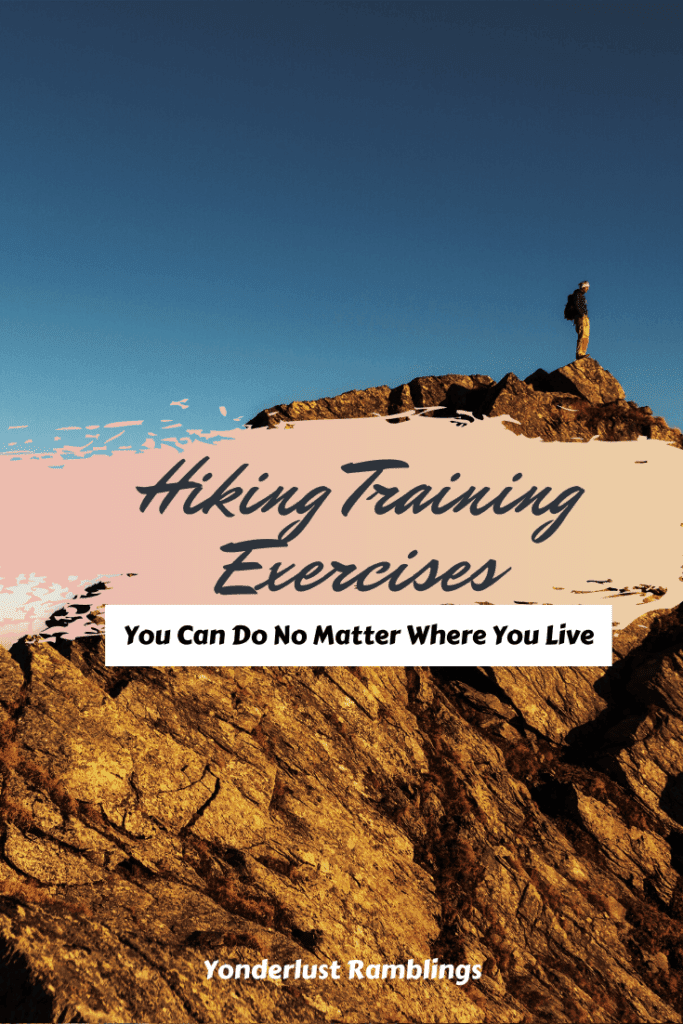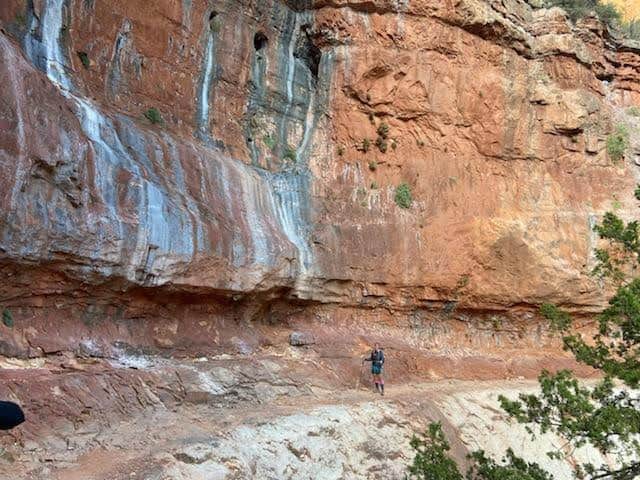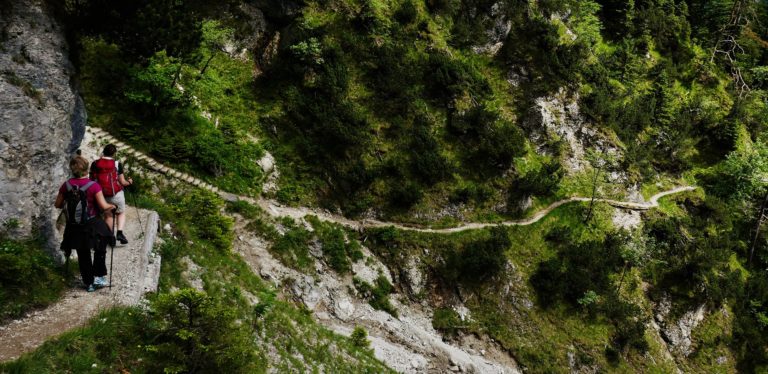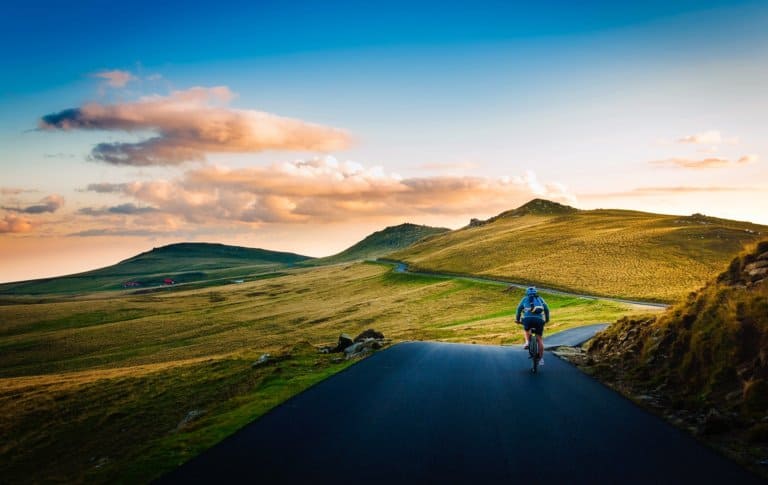6 Hiking Training Exercises You Can Do No Matter Where You Live
I love where I live. I honestly think that Texas is the best state in the country. It has beaches, deserts, canyons, forests, grasslands, sand dunes – almost every type of ecosystem exists here, even mountains! Yes there are true mountains in Texas, it is not all flat contrary to some popular beliefs! What Texas does NOT have though, are truly high elevation treks, or a plethora of challenging, long distance hikes! Like the 13,000+ feet summits of the western states, or the lengthy, months long backpacking trails of the Appalachians. So hiking training for, say, Mt. Whitney, the highest point in the lower 48 states at over 14,000 feet tall, is a daunting task for a native Texan! If you are chasing active travel pursuits, and upping your hiking game is one of them, it can be intimidating to live in a state that does not naturally contain these type of hiking exploits on which training for challenging hiking comes naturally! So how to do you train for a strenuous hike, when you live in, say, Texas, or Iowa, or Florida? I have had to figure this out myself, and living in Texas has not stopped me from being able to train successfully for grueling hikes like the 27 mile long 13,000+ King’s Peak summit in Utah, or the switchback laden Wheeler’s Peak in New Mexico, or the technical summit climb at Mt. Hood in Oregon. I am passing on to you 6 straightforward, un-complicated exercises to prepare for hiking, that you can do from anywhere, no matter where you live, in order to give you a proper foundation for your big hike! If not knowing how to train or where to start has been hindering you from expanding on your hiking goals, you now have the hiking training exercises and framework from which to start with and proceed on!
Disclosure: Below are some affiliate links-these are all products I highly recommend. I won’t make any recommendations on this page that I haven’t tested or personally used!
The 6 Most Effective Hiking Training Exercises
Hiking is a full body performance, and requires a coordinated whole body effort, though the most obvious area of focus is the lower body. True, it is important to target the lower body with exercises to prepare for hiking that focus and hone in on the quads, glutes, hamstrings, and calves, but it is also crucial to prepare the entire body and all necessary muscle systems for your hiking training, and that includes targeted exercises that enhance whole body hiking training and core strength. Below you will find the 6 most effective training for hiking exercises that accomplish this task. And they are hiking training exercises that anyone can complete, no matter where you live!

#1 Hiking Training Exercise: Squats
Squats are a great whole body, holistic, simple, and straightforward training for hiking exercise. The only thing you need to be able to do a squat is your own body weight for resistance! This exercise obviously targets the lower body, which is important for hiking training. Done correctly, squats can strengthen your legs, improve your balance, and strengthen your core. The main areas that squats target are the glutes, quadriceps, hamstrings, calves, and back muscles. Performing a squat, however, has the potential to target not only your lower body muscle systems, but your core systems too, including the abdominals and obliques.
To Do A Squat:
- feet facing straight and standing just slightly more than hip-width apart
- keeping your head and chest up, spine straight, shift your weight to your heels, push your hips back, and slowly lower into a sitting position
- lower until thighs are parallel to the floor
- knees should be over, but not past, your toes
- push back up through the heels to a standing position
- do 3 sets of 10 repetitions, resting between each rep
Insider Tip: Adding a jump up to your squats, or holding a kettlebell, are both additional add ons you can do for more of a challenge.
The most helpful tip I know for doing squats, is to imagine you are sitting down in a chair. And make sure that your head and chest are lifted up. This method will keep you in the right form for squatting. I also prefer to clasp my hands in front of my chest in a praying position, to resist the temptation to rest my hands on my legs and therefore begin to lean into them.
If you begin to feel any pain in your knees as you squat, STOP immediately! Only lower as far as your body allows while feeling comfortable.
#2 Hiking Training Exercise: Planks
Planks are perhaps the simplest, least complicated exercise to complete. Planks are a great way to strengthen your core, and a strong core affects your entire body system. Planks improve strengths, posture, and mobility, which are great assets to have for effective hiking. And just like squats, planks are fantastic options because you can perform them anywhere, and the only thing you need is your own body weight!
There are two main variations to doing a plank, and they involve the position of your arms. For a fully extended plank, you will be resting on your palms with your arms fully extended and directly below the shoulders. The other option is to prop yourself on your forearms, bent at 90 degree angles and directly under the shoulders.
To Do A Plank:
- lie face down on the floor
- position your elbows directly under your shoulders and lift onto either your palms or your forearms, and your toes
- keeping your spine and body straight, hold the plank in this position for at least 30 seconds reps
When doing planks, it is important to keep your body in a straight line from head to toe, parallel to the floor. Do not let anything begin to sag! Also, visualize that you are pulling your belly button in while holding the plank. This will help you to activate your core muscles during the plank, and improve your balance and stability. Some people become so focused on holding the plank that they forget to breathe! Do not hold your breath during your plank.
#3 Hiking Training Exercises: Step Ups
Step ups can require a prop, but it is a simple one that anyone should be able to obtain or improvise. There are specifically designed box step up benches available for purchase, like this adjustable one that can be bought on Amazon, or you can improvise with a crate, or a small stepstool or bench.
This exercise specifically targets your hamstrings, glutes, and quads, which are vital to hiking, especially uphill grades and summit climbs. Step ups improve stability and coordination in the lower body as well. The truth is that at level, flat walking, running, or hiking, the quads do not get engaged to their full potential. Step ups are a great way to prepare them for the type of full on “engagement” they will encounter on a challenging up hill hike or summit trek!
Step ups are a bit unique in that they focus and build on each leg individually, not just as a whole. You will be building equal strength on each side and in each leg, so as to not subconsciously favor one side over the other. This equal training will improve your stability, strength, and coordination for hiking.
To Do a Step Up:
- place your step up box or bench in front of you
- step up with your right foot, pressing through the heel as you lift and straighten your leg
- your left foot should follow to meet your right foot on the step
- bend your right knee and step down with your left foot
- bring the right foot down to meet the left foot on the floor
- repeat for 10 repetitions, then switch sides and lead with your left foot, following the same steps
When doing a step up, be careful not to allow your knee to pass your toes as you step up. Also, avoid pushing off or powering through the lift up by using your following leg. The power should always come from your leading leg, and it is what drives you forward and up to a standing position on top of your step. Finally, maintain a straight spine and upward position, and avoid rounding the back during the step up cycle.
Start with a lower height when you are just beginning with step ups. As you increase in speed, strength, and flexibility, you may gradually increase the height of your step up.
Insider Tip: for an increased challenge or those more experienced box step uppers, you may hold weights while doing this exercise
#4 Hiking Training Exercise: Lunges
Lunges are another great way to target your legs and lower body, as well as your abdominals and back muscles. They improve balance and stability as well, by targeting each leg individually.
Insider Tip: exercises that individually target, like lunges, are often called unilateral exercises. Bilateral exercises are exercises like squats, that target both of the legs working together at once.
To Do a Lunge:
- starting in a standing position, lead with the right leg by taking a large forward step, then lowering the hips until both legs are at 90 degree angles parallel to the floor
- make sure your knees are in line with your ankles and your body weight is in your heels
- step back up to a standing position and repeat, switching to the other leg
- do 3 sets of 10 repetitions, resting between each rep
To maintain a correct lunge posture, ensure that your upper body is kept straight with your chin up throughout the lunge cycle.
#5 Hiking Training Exercise: Take the Stairs
So this requires a little more prep, but it still should be something that is free and available to anyone, you may just have to get creative!
I live in a two story house, and I literally look for excuses to have to go upstairs sometimes, even when I do not necessarily need to. So what if you don’t encounter stairs naturally in your day to day life? Look for parks with series of stairs, or bleachers at schools or stadiums, or public stairwells. Do you work somewhere with stairs? Get there early or stay late and complete a couple laps of stair runs. You may not think you naturally encounter stairs or steps, but once you begin to actively look for them, they will start to appear. It just takes some creativity!
Taking the stairs is a great way to aerobically prepare for a long or challenging hike. It is important to not only complete the exercises listed above, but to incorporate aerobic exercises as well, and stepping up stairs is a great way to accomplish this.
#6 Hiking Training Exercise: Walk Briskly or Run
A brisk walk, especially if coupled with inclines, is another example of fantastic, easy, straightforward exercises to prepare for hiking. Try to walk at a pace that gets your heart rate up and keep it there. If you are able, up your walk to a run for a great aerobic way to prep for hiking.
Recommendations for Hiking Training Exercises
The biggest challenge to implementing and sticking with a regimen involving these 6 hiking training exercises is also one of its pros: the simplicity. The one big thing to be aware of is that in order to stick with this regimen, you need to prepare your boredom tolerance.
Honestly, performing step ups over and over again flirt with a very thin line involving my own boredom tolerance level. Sometimes I want to count my 30 second planks a little quicker just to move on. Lunging around a room can get dull. Have a plan for this! Find your favorite shows to watch, build an upbeat playlist, implement the additional add ons for extra challenge. You will encounter the boredom wall when training for hiking indoors, have a plan for how to face it.
One way to do this is to build an interval training program (or programs) specifically targeted towards these 6 exercises to prepare for hiking that you can work through, programs that incorporate all of these hiking training exercises. Sticking with an exercise routine tends to go better when it is planned out and intentional.
Download your own customizable HIIT home workout routine HERE!
Additionally, do not forget two other components of any hiking training program: rest days and cross training days. These days are not only important for your overall health and functionality of your hiking training regimen, but they will help you resist the temptation to give in to boredom by adding a little variety to your training schedule. A few examples of ideal cross training exercises include:
- yoga
- Pilates
- lifting weights
- kayaking
- running (get your beginner’s training guide for long distance running HERE)
- cycling (get your intro to road cycling for beginners HERE)
As you can see, these are 6 hiking training exercises that are straight-forward, effective, and can be performed by anyone no matter where you live or what resources you have available to you! The other great thing about these exercises to prepare for hiking is that you can easily incorporate them into any busy routine or lifestyle. Instead of walking from one end of the room to the other, lunge. When you get ready to stand up from a seated position, add a quick jump squat to it. Go for a quick, paced walk around your office on your lunch break. Take the stairs! Training for a big hike can be accomplished from anywhere ( even if you live at sea level ), it just takes a little creativity!
Read More: So you’ve got your big hike planned, you’ve been diligently completing your exercises to prepare for hiking, but what else do you need to know in order to be a knowledgeable and responsible hiker? You need the right hiking checklist complete with the 10 hiking essentials, and you need to know what hiking mistakes to avoid in order to have a safe and fun hike!
Want these 6 Simple Hiking Training Exercises in a handy download?
PIN for LATER!









